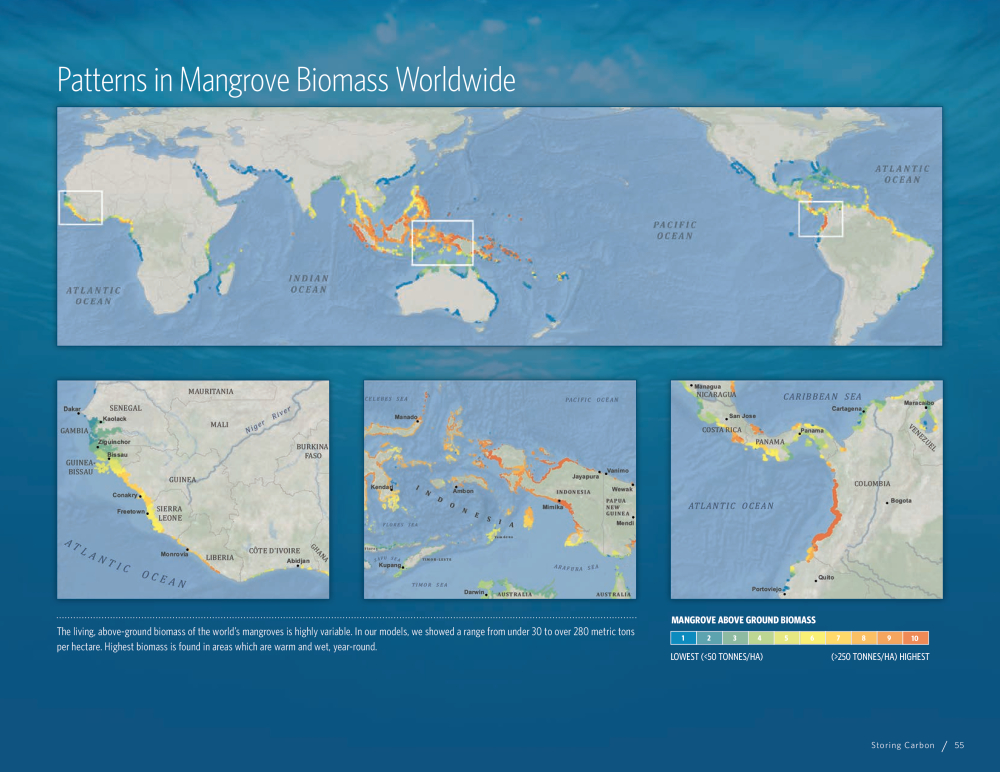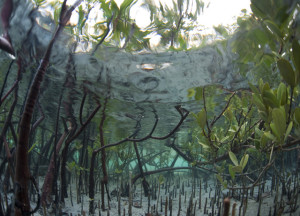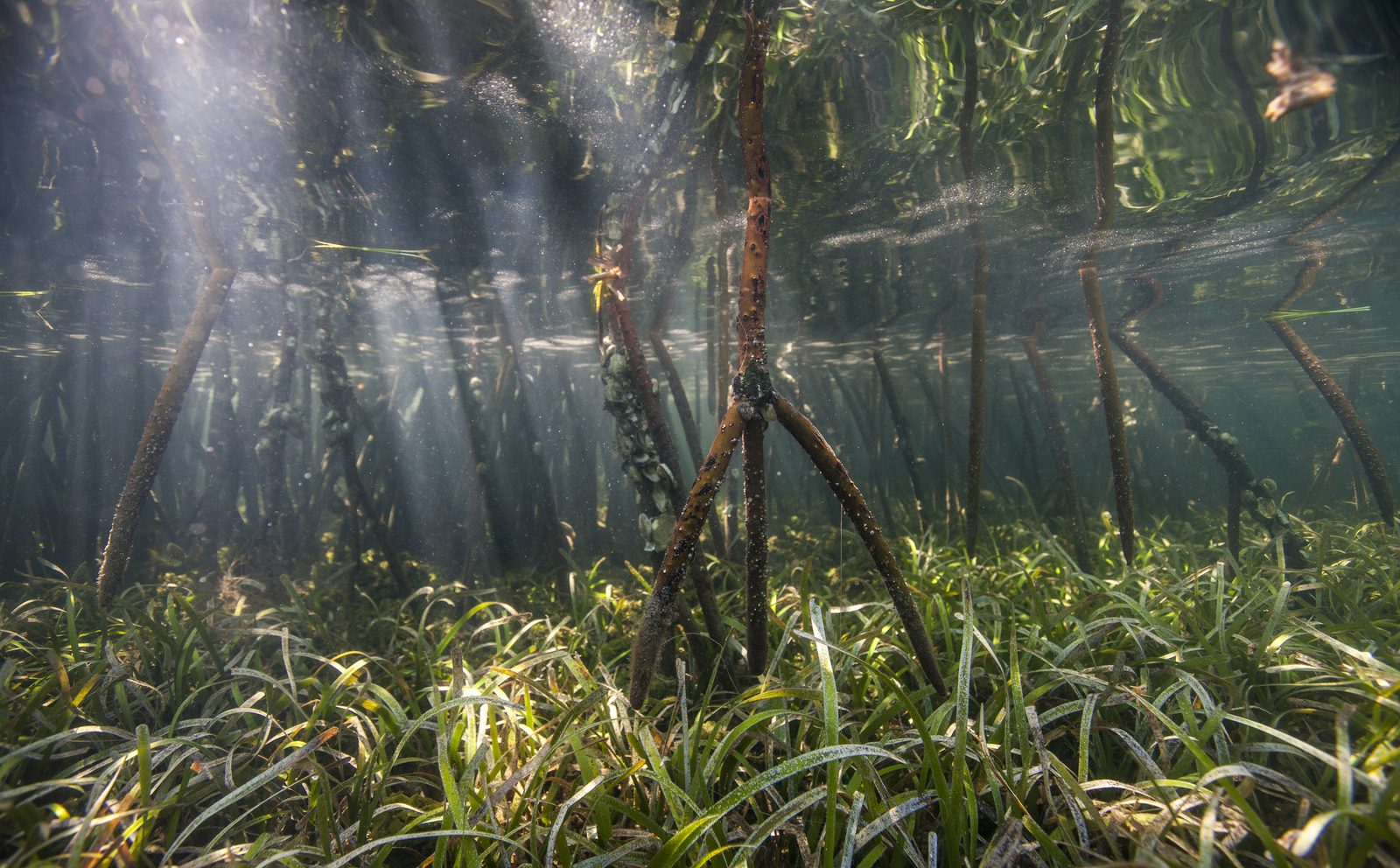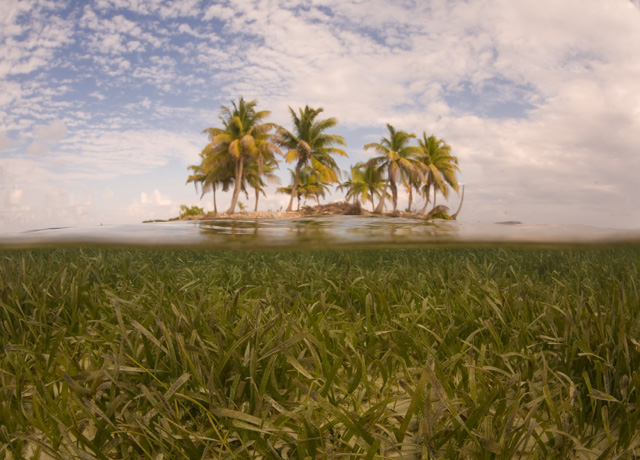In the face of global warming, coastal wetlands—including submerged seagrasses, mangrove forests, and salt marshes, and pelagic ecosystems—provide a vital service to the global community by storing large amounts of carbon.
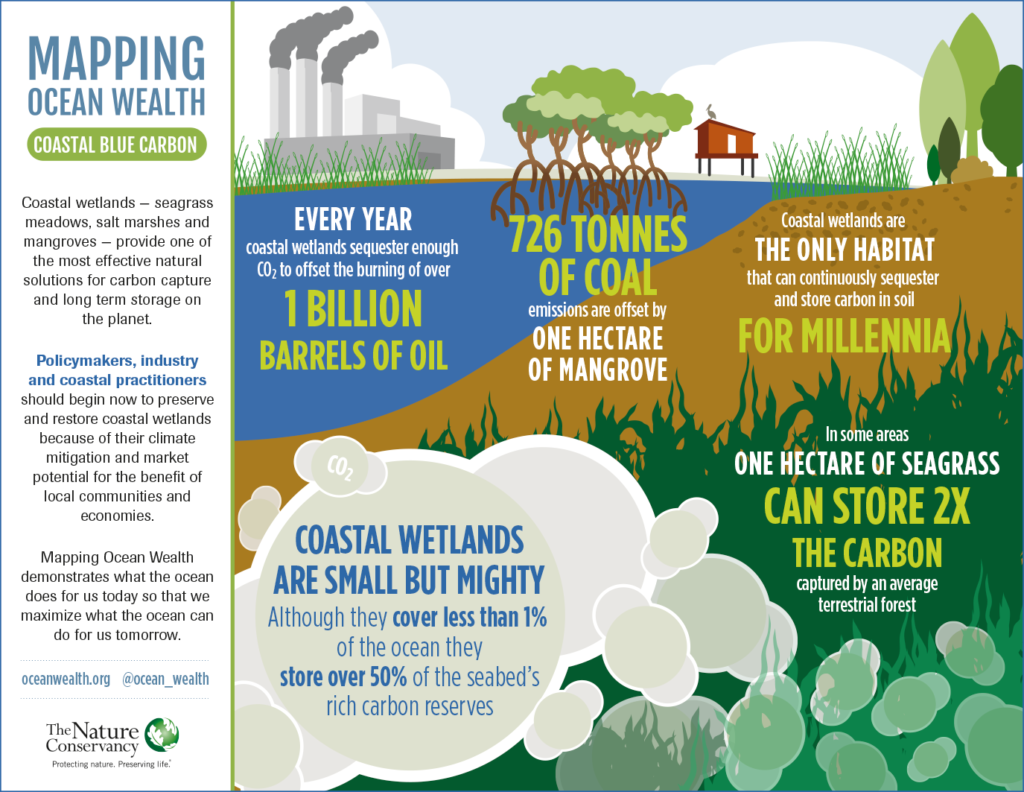
The Carbon sequestration power of coastal wetlands
- Intact coastal habitats have soils that range in depth from less than one meter to over ten meters, storing hundreds to thousands of metric tons of carbon per hectare.
- Coastal wetlands store and sequester more carbon than any other coastal ecosystem
- Mangrove soils store more than 6.4 billion tons of carbon globally
- The average hectare of seagrass stores 7 metric tons of carbon in its soil.
Our Projects
Global Mangrove Biomass
Working with partners in the University of Cambridge, we conducted a review of all the available science and developed a model describing the relationship between mangrove biomass and climate (temperature, rainfall and seasonality).
The results of the study confirmed that mangroves are a biomass powerhouse, but it also called out the most valuable areas of all. This knowledge can be translated into action. For the countries with high biomass value such as Indonesia, Brazil and Nigeria, including mangroves in national policies could yield beneficial results in offsetting a certain amount of their greenhouse gas emissions. For smaller island countries, like Cuba and Solomon Islands, mangroves may represent a significant portion of their total forest. When thinking about ways to finance conservation, market-based mechanisms may provide a significant opportunity as they represent one of the islands’ large assets.
Mangrove Soil Carbon
More than 90% of total carbon stock in mangrove forests can be stored in the soil. The Woods Hole Research Center, in collaboration with The Nature Conservancy, developed a machine learning-based model to predict mangrove soil carbon storage based on climatic, vegetation, topographic and hydrologic properties that can be inferred from satellite data. Using this model, they were able to estimate the carbon storage within any mangrove forest in the world. The study found that mangrove soils hold more than 6.4 billion tons of carbon globally, but that mangrove forest destruction caused as much as 122 million tons of carbon to be released to the atmosphere between 2000 and 2015. Read the paper here. View mapped data here.
Mangrove Blue Carbon and Climate Mitigation
Protecting and restoring coastal wetlands, like mangroves, provide both climate mitigation and adaptation benefits. Understanding mangrove restoration and conservation potential can contribute to country-level climate mitigation goals, like National Determined Contributions (NDCs). Using globally applicable datasets, TNC’s Ocean Wealth Mapping Portal’s new Blue Carbon app provides insight to how mangroves can be included into national climate goals. Check out the mangrove potential in your country here.
Blue Carbon in Australia
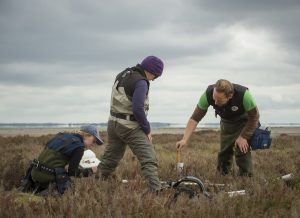
Our Australian project focuses on modelling and mapping the social and economic values of saltmarsh, seagrass and mangrove habitats through fisheries, recreation, tourism, blue carbon and coastal protection. We use a geographically nested, case study approach with a focus on marine habitats that occur in central Victoria and northern New South Wales, specifically Port Philip Bay and Western Port Bay (Victoria) and the Richmond River/Tuckean Swamp estuary (NSW). Read more here.
Additional Information
Ecosystems
Top image: ©Ami Vitale. Photo Credits in Text: © Simon Reeves, © Jeff Yonover. Tiles (left to right): © Tim Calver, © Donna Squire, © Ethan Daniels

